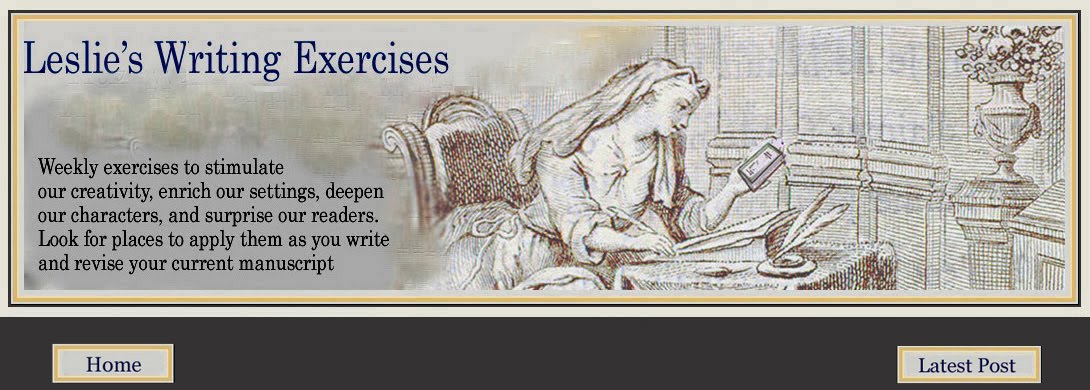***This post is the second in a series of eight. From now through September I'll be posting weekly exercises designed to take our short stories from rough draft to finished "masterpiece"(or as close as we can get ;-) with the help of the late John Gardner and a host of other well-known authors and teachers. Click here for Part I ***
There’s a famous writing exercise you’ve probably heard of, an exercise in technique that the late John Gardner developed to explore links between character emotion and setting. There are four parts to it. Here’s one of them:
“Describe a building as seen by a man whose son has just bee killed in a war. Do not mention the son, war, death, or the old man doing the seeing; then describe the same building, in the same weather and at the same time of day, as seen by a happy lover. Do not mention love or the loved one.”
I’d like to tweak this exercise to help me develop the setting in my own story. It would be easy to write only one side of this exercise. The happy lover’s point of view, for instance, if that’s an emotion that works for your story. But it’s helpful, I think, to write the contrasting POV as well, to write both extremes in order to really understand the setting's "dramatic potential". In my story my POV character, Victoria, arrives with her family at a Christmas tree farm in the country, the setting where most of my story will take place. She’s irritable and on edge, angry with her husband for ruining a day that is supposed to be joyful, playful, and fun. I think it will help me develop the setting and character if I explore how different her interpretation of the tree farm would be were she to be happy instead, and thinking about how much she can't wait to make love to Tom as soon as the tree is up and decorated.
The Christmas tree farm is an important part of my story--almost as important as one of my main characters (if not, the story might as well take place somewhere else). So instead of just describing the tree farm as if it were a photo or a painting, I want to use Gardner’s exercise to set the mood of the story, to anchor the reader in time and place, to move the story forward, and most importantly, to reveal something about Victoria’s character and the whole family dynamic.
As Janet Burroway writes: “Our relation to place, time, and weather, like our relation to clothes and other objects, is charged with emotion more or less subtle, more or less profound. It is filled with judgment mellow or harsh. And it alters according to what happens to us…. Imagine experiencing a thunderstorm when in the throes of a new love: the rain might seem to glitter, the lightning to sizzle, the thunder to rumble with anticipation. The downpour would refresh and exhilarate, nourishing the newly budding violets. Then imagine how the very same storm would feel in the midst of a lousy romantic breakup: the raindrops would be thick and cold, almost greasy; the lightning would slash at the clouds; the thunder would growl. Torrents of rain would beat the delicate tulips to the ground.”
Take a look at this passage from Louis L’Amour’s novel, Hondo (used as an example of “how to weave character, landscape, and action” in Writing Fiction Step by Step by Josip Novakovich):
Novakovich writes: “L’Amour creates suspense while giving us the setting from the perspective of his protagonist; the setting not only helps us get into the story, it also helps us experience the character’s mood (tension, vigilance)…. if L’Amour simply described how the southwestern landscape looks every summer, he’d create no suspense. His fiction would be reduced to a travelogue.” (Novakovich).
Novakovich writes: “L’Amour creates suspense while giving us the setting from the perspective of his protagonist; the setting not only helps us get into the story, it also helps us experience the character’s mood (tension, vigilance)…. if L’Amour simply described how the southwestern landscape looks every summer, he’d create no suspense. His fiction would be reduced to a travelogue.” (Novakovich).
John Gardner: The Art of Fiction: Notes on Craft for Young Writers
Josip Novakovich: Writing Fiction Step by Step
Janet Burroway: Writing Fiction: A Guide to Narrative Craft
Josip Novakovich: Writing Fiction Step by Step
Janet Burroway: Writing Fiction: A Guide to Narrative Craft




No comments:
Post a Comment
Thanks for sharing your thoughts...